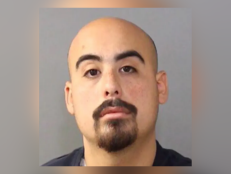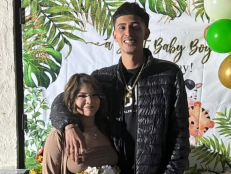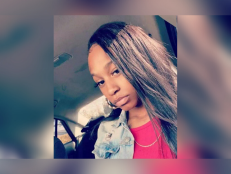Barry Levine's Journey From Covering the Son of Sam to Uncovering What You Didn't Know About Jeffrey Epstein
The Spider author Barry Levine reveals how he started covering crime stories, the real-time challenges in writing about Epstein, and why he likes ID's Deadly Women.

Have you always been interested in true crime? Why did you decide to write a book based on crime?
I became hooked on true crime stories when my college newspaper at Temple University in Philadelphia—The Temple News—sent me to New York City during the hot summer of 1977 to do a feature story on the Son of Sam serial killer, who was terrorizing the Big Apple. What was supposed to be a two-day trip turned into a two-week adventure. I attended a massive press conference at a Queens police precinct, and I was totally mesmerized by the professional police reporters. I began tracking down leads on his possible identity, talked to victims’ families, explored the crime scenes, tried to get into the mind of who this guy was. Little did any of us know that David Berkowitz was only weeks away from being identified and arrested. Back then, Son of Sam hysteria was at its height. Screaming headlines every day in the New York Post and Daily News. Women all over the city were wearing their hair up in buns in the belief that Sam would not target them. Everyone wanted to figure out where he would strike next. And I came up with this “Double S” theory for “Son of Sam” after marking the shootings on a map that appeared to show a pattern. We published my map in the college paper with my stories. Crime stories have been a part of my career ever since. Over the years, for print and television, I directed many reporting teams as we investigated virtually all the major crime stories that have captivated the American public: Amy Fisher, Susan Smith, O.J. Simpson, JonBenet Ramsey, Scott Peterson…. the list goes on and on. Jeffrey Epstein, as I wrote in the book, was one of the most extraordinary and despicable criminals of our recent history. I began reporting about him way back in the mid-2000s, during his first major brush with the law in Florida.
What was the inspiration behind your book?
Writing a book on Epstein was, for me, a natural leap after my first book, All the President’s Women: Donald Trump and the Making of a Predator. Trump and Epstein—and Ghislaine Maxwell—were running in the same circles in Palm Beach and New York in the 1990s and 2000s. As much as Trump now wants to distance himself from Epstein, they were friends. Even during my research on Trump for the last book, I was coming across sources who wanted to tell me about Epstein. Separate from Trump, I had been following the Epstein saga since the Florida case where he managed to wriggle out of with only a slap on the wrist. It was an outrage then and still an outrage now. In the book, we get into how it all went down behind the scenes involving people like Florida State Attorney Barry Krischer and Alexander Acosta, then the U.S. Attorney for the Southern District of Miami. A good part of the book shows how, after getting off so lightly in the Florida plea agreement, Epstein actually seemed more emboldened to continue abusing young women and minors, in addition to the courting powerful and wealthy people—mostly men—into his social web.
What is your writing process like? Do you gather all your research / plot lines first and write an outline before putting pen to paper, or do you dive right in?
I dove right in. The adrenaline really kicks in when you’re working on a book and there’s competition with other reporters and real-time developments happening in the case. Over what became a 10-month investigation, new lawsuits from Epstein’s victims were being filed, troves of new court documents being released—not to mention the probe that was continuing into his criminal actions and his finances by the attorney general for the Virgin Islands, Denise George, and the ongoing federal investigation in New York which resulted in Ghislaine Maxwell’s arrest. That came down right on my deadline and I managed to learn some exclusive details that are in the book. But what’s exciting is going down different reporting threads and not knowing where they’re going to take you. I had a few graduate journalism students on my team—researchers—who I had divided up into researching various sections of Epstein’s life. I was also fortunate to have reporting assistance from two superior journalists: Sharon Churcher, who originally broke the Virginia Roberts Giuffre and Prince Andrew story for the UK newspaper Mail on Sunday years back, and Philip Messing, a legendary former police reporter for the New York Post. It was a wild and challenging ride, especially as the reporting and writing for this book fell into quarantine because of the pandemic. But I’m very proud of what we uncovered.
Who/what were you most intrigued by in the writing of this book?
Despite the existence of so much great reporting on Epstein (James Patterson’s Filthy Rich book, the Miami Herald “Perversion of Justice” series on the Florida case, some great pieces in the New York Times), I was struck, going in, by how much about Epstein was still a mystery. Was there a trigger of some kind from his past that could help explain his criminality? No one, it seemed to me, really dug into his roots looking for those answers. It was important to me that we focus on the beginning of his life. I gained access to his boyhood home in Sea Gate (Coney Island, Brooklyn). I looked out the window of his old bedroom, trying to imagine what he saw as a kid. We learned about his relationship with his parents (close to his mom; distant from his dad). There was bullying, there was an alleged stalking incident involving a former high school girlfriend. Some of this stuff came back to haunt him in jail in New York before his death. We went back and really studied his life before that very first accusation of sexual abuse, which was 1984 in Hilton Head Island, South Carolina. He was 31 at the time; the girl was 13. Also, I was fascinated with Ghislaine Maxwell and one part of the book really focuses on her roots and what was in her past that could have served as a catalyst for her complicated relationship with Epstein. Her presence in Epstein’s household initially gave some girls Epstein recruited a false sense of safety. But she didn’t turn out to be a protector—she, too, was a predator. I explore their very complex relationship in detail.
Is there something about Epstein in particular that drew you to the story?
I wanted to understand this dynamic of how Epstein was able to move between his two worlds: drawing these important men into his web, showing up at scientific conferences, meetings with titans from business and politics like Bill Gates, traveling with Bill Clinton; and then, within hours or days, being back to spending countless hours pursuing and sexually abusing young women and minors. In addition, I was also fascinated by the women who found themselves in both the role of victims while also accused of facilitating the victimization of others. Haley Robson is a good example of this and she opens herself up to some remarkable self-examination, which appears in the book’s epilogue. Her courage, like so many others who spoke to me, made writing this book worthwhile.
Is there a recent case/person that you are particularly interested in? Why?
I’ve been thinking more and more about a crime story that gave me nightmares when I was a kid. Perhaps it could be the subject for my next book. It’s been in the back of my mind for many decades and now I may be ready to investigate it.
What’s your favorite ID Show/host/experience?
While Ghislaine Maxwell is not a murderer, I am fascinated by viewing her in the context of others profiled in ID’s “Deadly Women,” which deals with the psyche of female killers.









